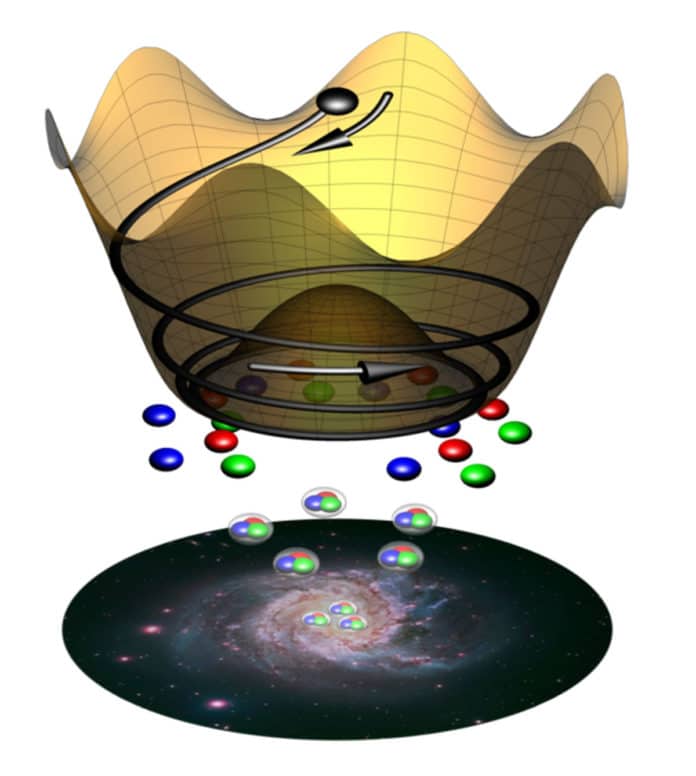One of the goals of fundamental physics is to understand the origin of the Universe. For this purpose, the Standard Model (SM) of particle physics needs an extension to explain the cosmological excess of matter over antimatter.
A new study by the Institute for Advanced Study to better understand the origin of the universe, now has provided some crucial details on some of the most enduring questions in fundamental physics: How can the Standard Model of particle physics be extended to explain the cosmological excess of matter over antimatter? What is dark matter? And what is the theoretical origin of an unexpected but observed symmetry in the force that binds protons and neutrons together?
Scientists have presented a compelling case in which the quantum chromodynamics (QCD) axion, first theorized in 1977, sheds light on these critical questions.
Keisuke Harigaya, Member in the School of Natural Sciences at the Institute for Advanced Study, said, “We revealed that the rotation of the QCD axion could account for the excess of matter found in the universe. We named this mechanism axiogenesis.”
Imperceptibly light, the QCD axion—at least one billion times lighter than a proton—is almost ghost-like. Millions of these particles go through conventional-issue each second without notice. Notwithstanding, the subatomic level interaction of the QCD axion can still leave perceptible signals in experiments different things with unprecedented sensitivities. While the QCD axion has never been directly identified, this investigation gives added fuel to experimentalists to hunt down the tricky molecule.
Raymond T. Co of the University of Michigan said, “The versatility of the QCD axion in solving the mysteries of fundamental physics is truly amazing. We are thrilled about the unexplored theoretical possibilities that this new aspect of the QCD axion can bring. More importantly, experiments may soon tell us whether the mysteries of nature truly hint towards the QCD axion.”
QCD axion can fill three missing pieces of the physics jigsaw puzzle simultaneously. First, the QCD axion was initially proposed to explain the so-called strong CP problem—why the strong force, which binds protons and neutrons together, unexpectedly preserves a symmetry called the Charge Parity (CP) symmetry.
The CP symmetry is inferred from the observation that a neutron does not react with an electric field despite its charged constituents. Second, the QCD axion was found to be a good candidate for dark matter, offering what could be a breakthrough in understanding the composition of approximately 80 percent of the universe’s mass that has never been directly observed. In their work on the early universe, Harigaya and Co have determined that the QCD axion can also explain the matter-antimatter asymmetry problem.
As matter and antimatter particles interact, they are mutually destroyed. In the first fraction of a second after the Big Bang, matter and antimatter existed in equivalent sums. This symmetry prevented the predominance of one type of matter over the other. Today, the universe is loaded up with matter, showing that this symmetry more likely than not been broken. Scientists site the QCD axion as the culprit. Kinetic energy, resulting from the motion of the QCD axion, delivered extra baryons or ordinary matter. This slight tipping of the scale for the matter would have had a pronounced cascade effect, preparing for the universe as today is known.
A greater understanding of the newly discovered dynamics of the QCD axion could potentially change the expansion history of the universe and thus inform the study of gravitational waves.
Harigaya said, “Since theoretical and experimental particle physicists, astrophysicists, and cosmologists began studying the QCD axion, great progress has been made. We hope that our work further advances these interdisciplinary research efforts.”
The study is published in the journal Physical Review Letters.
